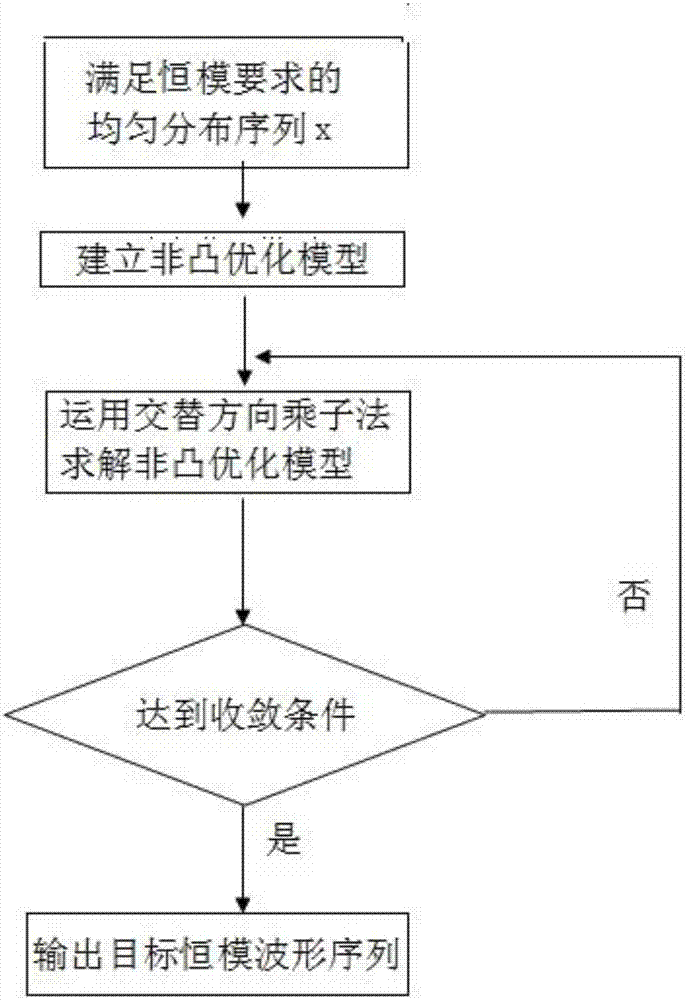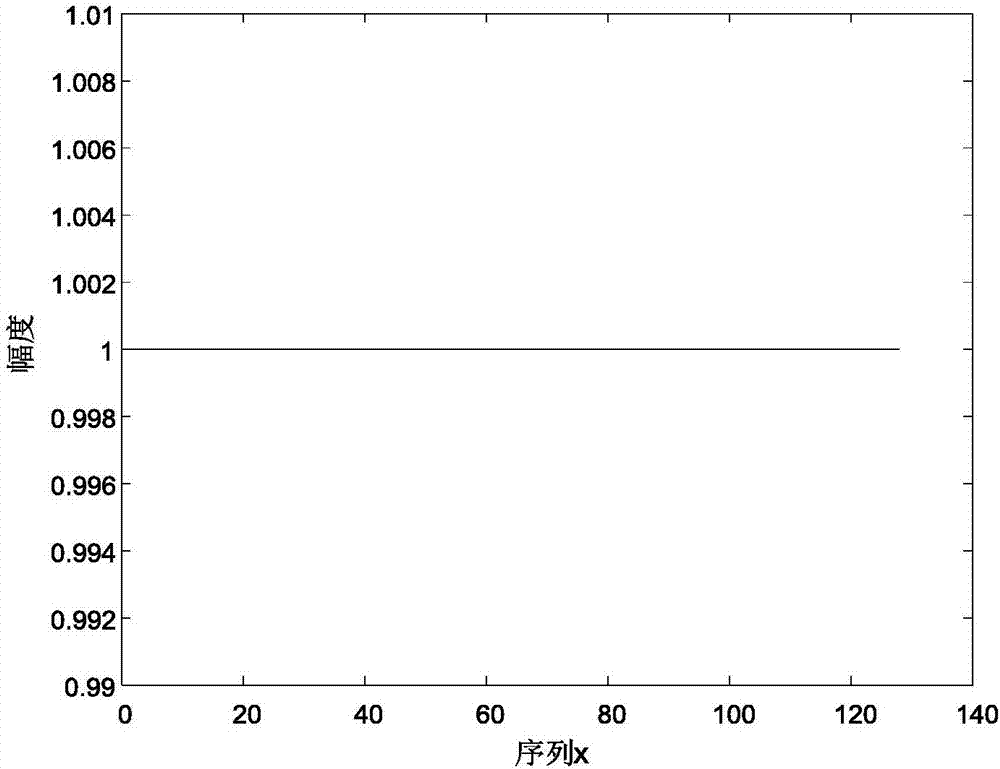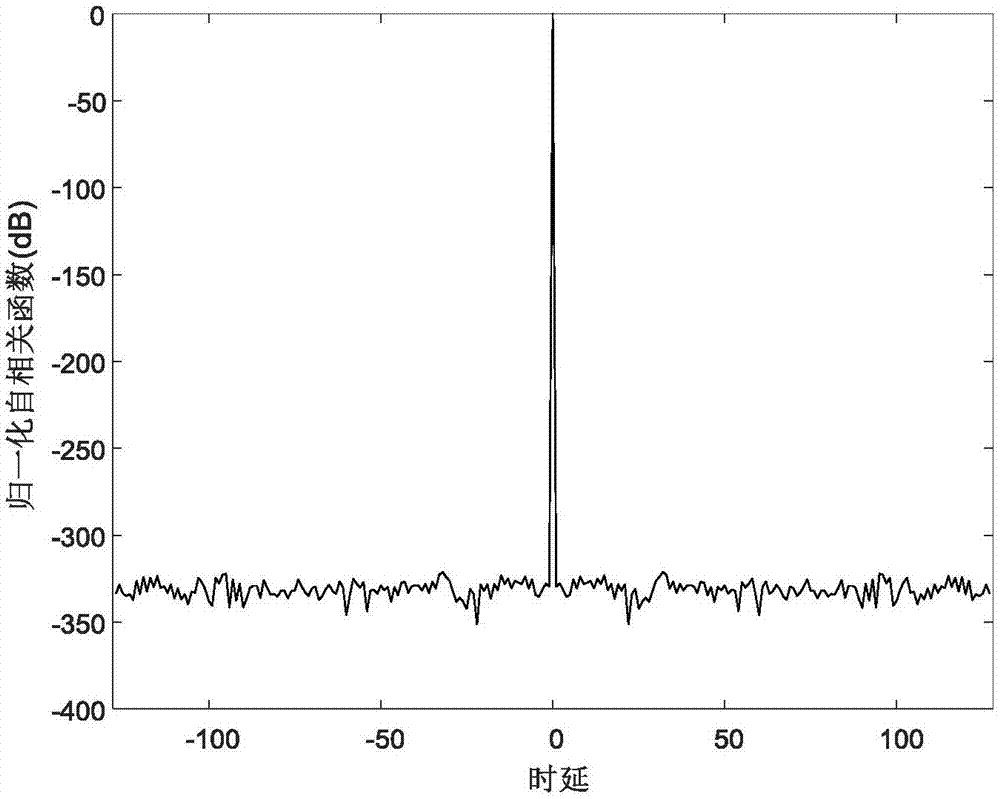Ultra-low sidelobe constant modulus waveform design method
A technology of ultra-low sidelobe and waveform design, which is applied to radio wave measurement systems and instruments, and can solve problems such as waveforms that are difficult to meet requirements
- Summary
- Abstract
- Description
- Claims
- Application Information
AI Technical Summary
Problems solved by technology
Method used
Image
Examples
Embodiment Construction
[0075] The present invention will be described in detail below in conjunction with the accompanying drawings and specific embodiments.
[0076] Such as figure 1 As shown, the ultra-low sidelobe constant modulus waveform design method specifically includes the following steps:
[0077] Step 1, generate a uniformly distributed sequence that meets the constant modulus requirements and calculate the autocorrelation function of each item in the sequence to realize the impulse autocorrelation of the sequence;
[0078] Generate a uniformly distributed sequence x of length N: x=[x 0 … x N-1 ] T ,in,[·] T represents the transpose of , x 0 represents the first item in the sequence x, x N-1 Represents the last item in the sequence x; the sequence x satisfies the constant modulus requirement, ie |x n |=1,x n Represents the nth item in the sequence x, n=0...N-1, N is the length of the sequence x, in this embodiment, select N=128;
[0079] Since the non-periodic sequence waveform d...
PUM
 Login to View More
Login to View More Abstract
Description
Claims
Application Information
 Login to View More
Login to View More - R&D
- Intellectual Property
- Life Sciences
- Materials
- Tech Scout
- Unparalleled Data Quality
- Higher Quality Content
- 60% Fewer Hallucinations
Browse by: Latest US Patents, China's latest patents, Technical Efficacy Thesaurus, Application Domain, Technology Topic, Popular Technical Reports.
© 2025 PatSnap. All rights reserved.Legal|Privacy policy|Modern Slavery Act Transparency Statement|Sitemap|About US| Contact US: help@patsnap.com



